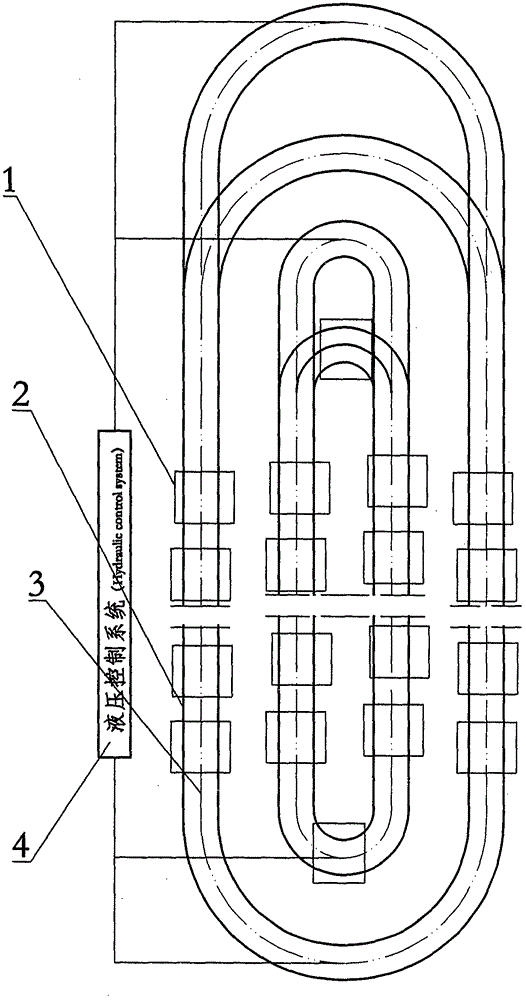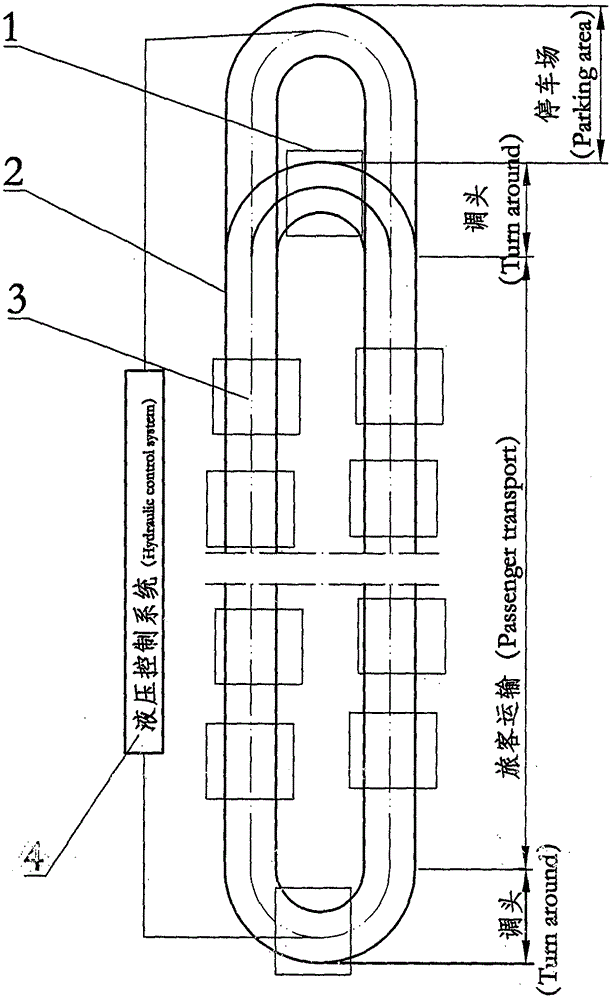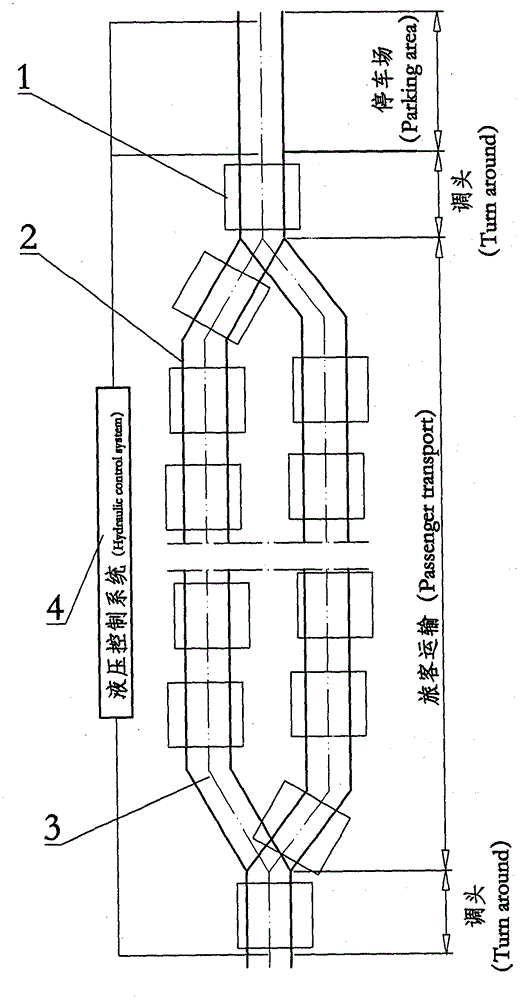Hydraulic permanent magnetic levitation rail traffic system
A rail transit and maglev technology, applied in electric traction, electric vehicles, transportation and packaging, etc., can solve the problems of high investment cost, high operating cost, high power consumption, etc., and achieve fast construction speed, low operating cost and energy saving. Effect
- Summary
- Abstract
- Description
- Claims
- Application Information
AI Technical Summary
Problems solved by technology
Method used
Image
Examples
Embodiment Construction
[0019] With regard to the implementation of the hydraulic permanent magnet maglev rail transit system, it will be explained according to the carriage, guide rail, magnetic rodless piston hydraulic cylinder, hydraulic control system and circuit design and control. , Installation, commissioning, and maintenance work with each other, there is both division of labor and cooperation, and they influence each other.
[0020] 1) To implement a set of hydraulic permanent magnetic levitation rail transit system, it is first necessary to clarify the line and passenger flow (including peak passenger flow, low peak passenger flow and normal passenger flow), and thus determine the operating vehicles (how many passengers per section, how many Section combination, or combination under what circumstances), distance between stations, driving speed, parking time, etc.
[0021] 2) Simulation principle test and preliminary design
[0022] A) According to the structural weight and load of the carr...
PUM
 Login to View More
Login to View More Abstract
Description
Claims
Application Information
 Login to View More
Login to View More - R&D
- Intellectual Property
- Life Sciences
- Materials
- Tech Scout
- Unparalleled Data Quality
- Higher Quality Content
- 60% Fewer Hallucinations
Browse by: Latest US Patents, China's latest patents, Technical Efficacy Thesaurus, Application Domain, Technology Topic, Popular Technical Reports.
© 2025 PatSnap. All rights reserved.Legal|Privacy policy|Modern Slavery Act Transparency Statement|Sitemap|About US| Contact US: help@patsnap.com



